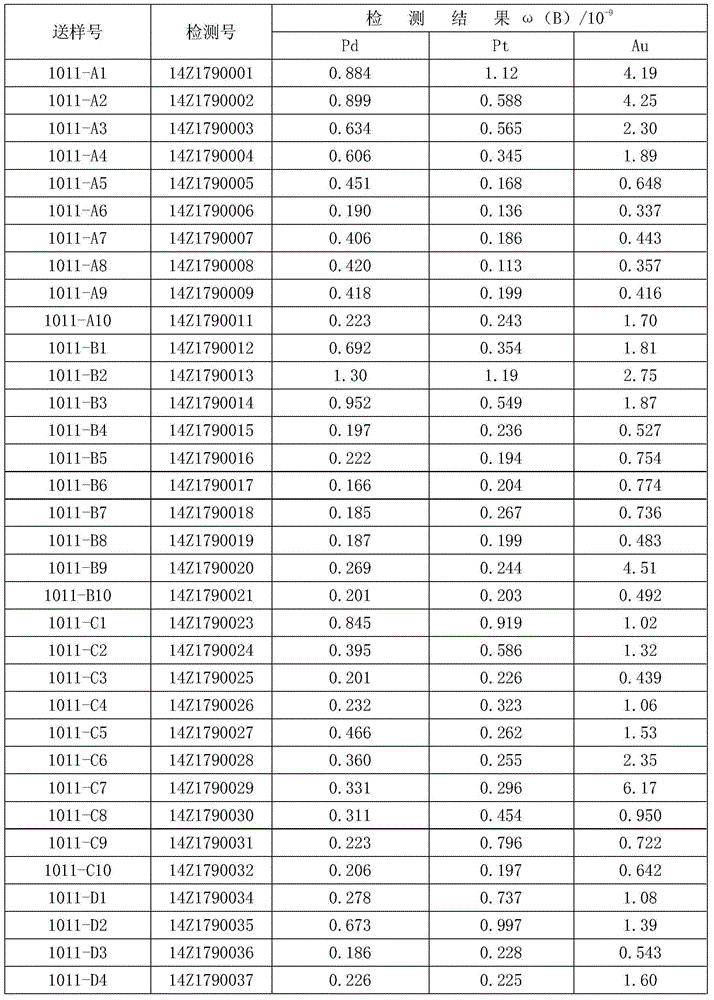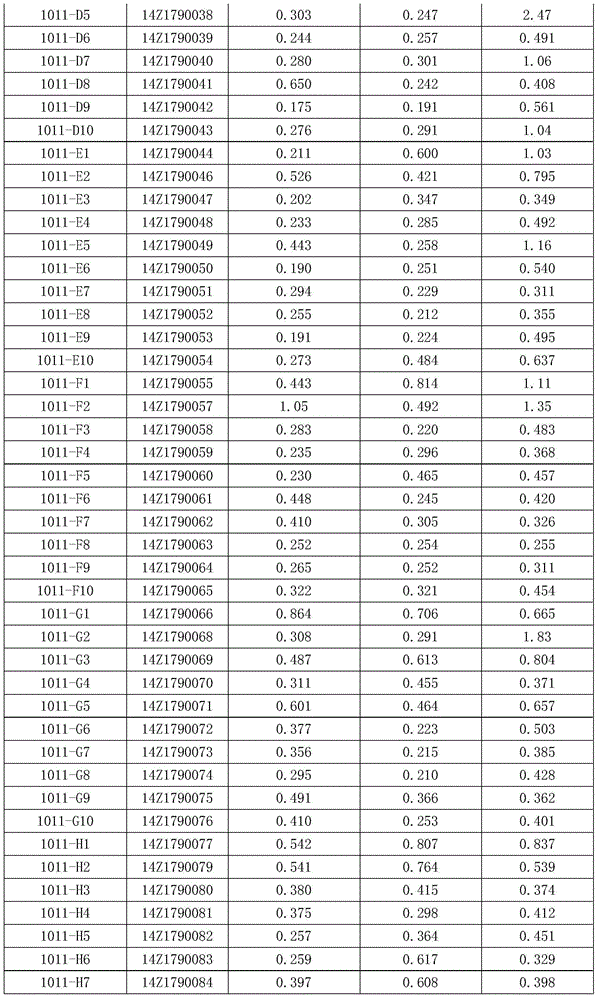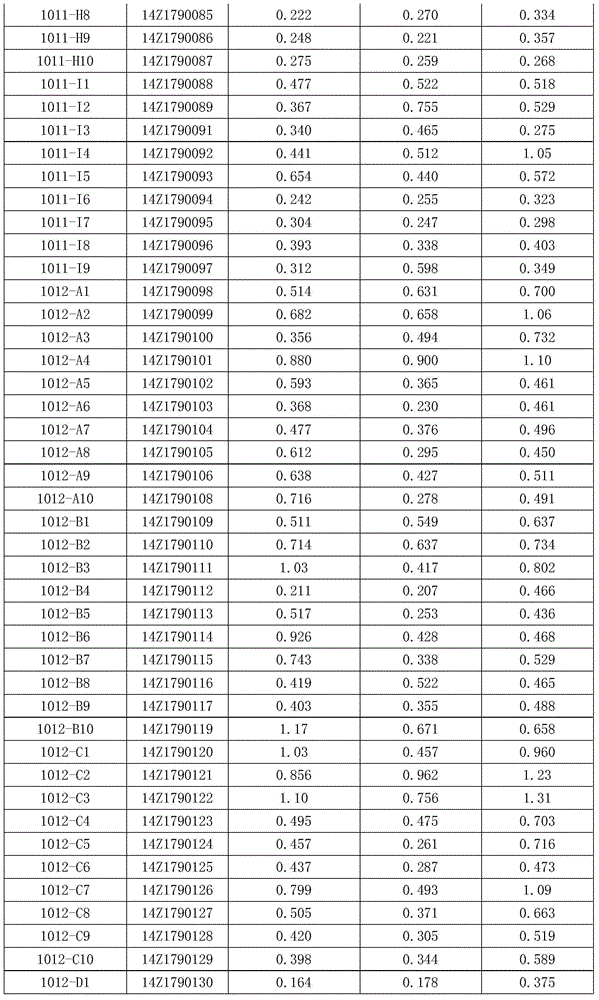Analytical method for identifying gold, platinum and palladium in chemical samples
A technology for chemical samples and analysis methods, which is applied in the analysis of materials, material analysis by electromagnetic means, scientific instruments, etc., and can solve the problems of poor analysis results, low recovery rates, and different recovery rates.
- Summary
- Abstract
- Description
- Claims
- Application Information
AI Technical Summary
Problems solved by technology
Method used
Image
Examples
Embodiment 1
[0021] The sample source for this experiment: Tanzania Geological Survey, the sample is soil, powdery. Analysis batch number: 2014Z179.
[0022] Other materials, reagents, etc. used in the following examples can be obtained from commercial sources unless otherwise specified.
[0023] experiment method:
[0024] Step 1 Accurately weigh 10.0 g of the sample in a porcelain boat, place the porcelain boat in a low-temperature muffle furnace and burn it. After the temperature rises to 650°C, continue burning for 1.5-2 hours. Let it cool slightly and take out the porcelain boat.
[0025] Step 2 Pour the burned samples in the porcelain boat into a 250 mL conical flask in order, and add 10 mL of water to moisten.
[0026] Step 3 Add 30 mL of concentrated hydrochloric acid and 10 mL of nitric acid and shake well. Place the beaker on a 200°C hot plate and heat it from a low temperature to around 25 mL. Remove the beaker from the hot plate and add 100 mL of water to shake well.
[0027] Step 4 Mak...
Embodiment 2
[0043] The sample source for this experiment: Hubei Provincial Institute of Geological Experiment. The sample is water system sediment. The sample sent to our center has been processed to -200 mesh (-0.074mm) powder, which can be directly used for analysis and testing. After receiving the sample, Check the samples against the sample delivery form, and number them after confirmation. Internal inspection (repeatability test) is coded according to 5% of the total number of samples and randomly selected.
[0044] Analysis batch number: 2015Z081.
[0045] Other materials, reagents, etc. used in the following examples can be obtained from commercial sources unless otherwise specified.
[0046] experiment method:
[0047] Step 1 Accurately weigh 10.0 g of the sample in a porcelain boat, place the porcelain boat in a low-temperature muffle furnace and burn it. After the temperature rises to 650°C, continue burning for 1.5-2 hours. Let it cool slightly and take out the porcelain boat.
[0048...
Embodiment 3
[0075] The source of the samples for this experiment: Institute of Geophysical and Geochemical Exploration, Chinese Academy of Geological Sciences. The samples are rocks (including carbonate, peridotite, shale, etc.). Analysis batch number: 2013Z021.
[0076] Other materials, reagents, etc. used in the following examples can be obtained from commercial sources unless otherwise specified.
[0077] The test method is the same as in Example 2.
[0078] Table 7 Some experimental data
[0079]
[0080]
[0081]
[0082] Reporting rate of elements: A total of 1721 samples were analyzed, and the detection limits of the analysis methods given by this party were statistically calculated. The reporting rates of the three elements were all higher than 95%, indicating that our analysis method can actually require.
[0083] Qualification rate of primary reference materials: 4 primary reference materials are inserted into each analysis batch (50 numbers are one batch), all samples are divided into 4...
PUM
 Login to View More
Login to View More Abstract
Description
Claims
Application Information
 Login to View More
Login to View More - R&D
- Intellectual Property
- Life Sciences
- Materials
- Tech Scout
- Unparalleled Data Quality
- Higher Quality Content
- 60% Fewer Hallucinations
Browse by: Latest US Patents, China's latest patents, Technical Efficacy Thesaurus, Application Domain, Technology Topic, Popular Technical Reports.
© 2025 PatSnap. All rights reserved.Legal|Privacy policy|Modern Slavery Act Transparency Statement|Sitemap|About US| Contact US: help@patsnap.com



